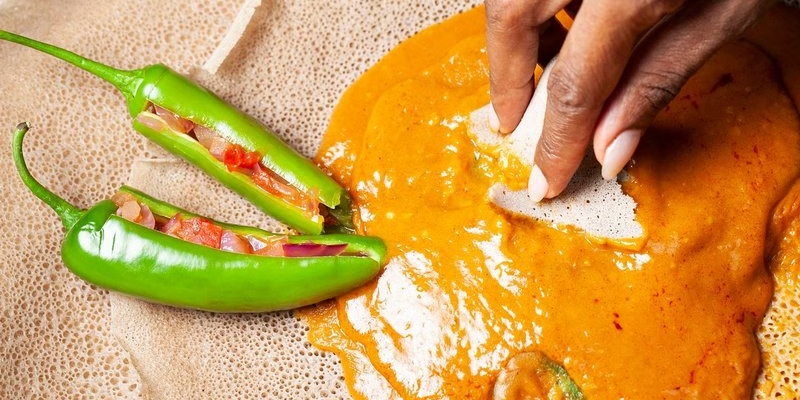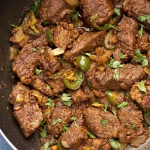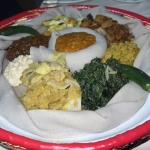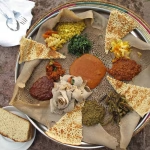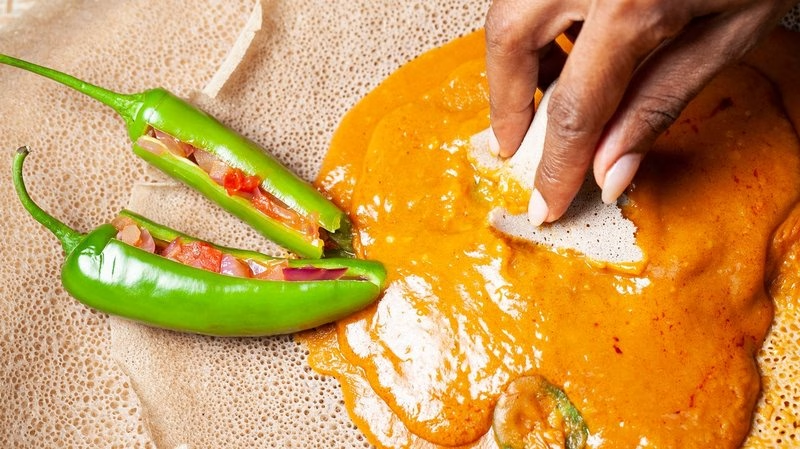
Introduction
Fasting Shiro is a delightful Ethiopian dish that shines during fasting periods, particularly in the Ethiopian Orthodox tradition. This savory stew, primarily made from chickpea flour, is known for its rich flavors and satisfying texture that keeps your taste buds excited. Originating from Ethiopia, Fasting Shiro combines unique spices with the wholesome goodness of legumes, making it a staple for vegetarians and those observing fasting days.
In this article, you’ll discover a comprehensive guide to crafting the perfect Fasting Shiro at home. We will cover the essential Fasting Shiro ingredients, explore delicious variations, and provide you with step-by-step instructions to create this comforting dish. Whether you’re a seasoned chef or a culinary newbie, you’ll find tips and tricks to enhance your Fasting Shiro experience. So, roll up your sleeves and get ready to dive into the heartwarming world of Ethiopian cuisine!
Ingredients
Here’s a detailed table showcasing all the necessary ingredients for making Fasting Shiro:
| Ingredient | Measurement | Description |
|---|---|---|
| Chickpea Flour | 2 cups | Chickpea flour forms the base of Fasting Shiro, providing protein and a nutty flavor. |
| Onions | 2 medium, finely chopped | Onions add sweetness and depth, enhancing the overall flavor of the dish. |
| Garlic | 3 cloves, minced | Fresh garlic enhances the aroma and depth of flavor in Fasting Shiro. |
| Ginger | 1 tablespoon, minced | Ginger brings warmth and a slight spiciness, balancing the dish’s overall profile. |
| Berbere Spice | 2 tablespoons | This spice blend is essential for authentic Fasting Shiro, adding depth and heat. |
| Oil (Vegetable or Olive) | 3 tablespoons | Oil helps in sautéing onions and spices, creating a rich base for the stew. |
| Water or Vegetable Broth | 4 cups | Liquid to create a creamy consistency; broth adds extra flavor. |
| Salt | To taste | A basic seasoning to enhance all the flavors in your Fasting Shiro. |
Step-by-Step Instructions
Creating a pot of vibrant, aromatic Fasting Shiro is easier than you might think. Follow these simple steps:
Step 1: Prepare the Ingredients – Begin by gathering all your ingredients. Chop the onions finely, and mince the garlic and ginger. This prep work ensures that the flavors meld beautifully during cooking. You can also take this time to measure your spices and liquids to keep things organized.
Step 2: Sauté the Onions – In a large pot, heat the vegetable oil over medium heat. Once hot, add the chopped onions and sauté until they turn golden brown. The caramelization of the onions is crucial for a rich flavor base in your Fasting Shiro. Stir occasionally to prevent burning; this should take about 5-7 minutes.
Step 3: Add Garlic and Ginger – Once the onions are caramelized, add the minced garlic and ginger. Sauté for an additional 2-3 minutes until fragrant. Your kitchen will start to smell amazing! This step enhances the flavor profile of your Fasting Shiro, making it irresistibly aromatic.
Step 4: Mix in Spices – Now it’s time to add the berbere spice. Stir it into the onion mixture, allowing it to cook for about a minute. This is where the true magic happens—the spices bloom, creating a bold flavor that’s signature to Ethiopian cuisine.
Step 5: Incorporate Chickpea Flour – Gradually add the chickpea flour to the pot while stirring continuously. This step is important to avoid any lumps in your Fasting Shiro. The flour should absorb the oil and spices, creating a smooth mixture.
Step 6: Add Liquid – Carefully pour in the water or vegetable broth, stirring as you go. Bring the mixture to a gentle boil, then reduce the heat to low. Allow it to simmer for about 15-20 minutes, stirring occasionally. The chickpea flour will thicken the stew, so be sure to keep an eye on the consistency.
Step 7: Seasoning – Finally, taste your Fasting Shiro and add salt as needed. If you prefer a bit more heat, you can add a pinch of extra berbere spice.
Step 8: Serve and Enjoy – Once thick and creamy, remove from heat and serve hot. Fasting Shiro pairs excellently with injera, rice, or a side of fresh salad.
Pro Tips
– Keep stirring while adding chickpea flour to avoid lumps. The smoother, the better for your Fasting Shiro!
– For added depth, consider sautéing chopped tomatoes with onions for a different twist on the traditional recipe.
– Let the stew cool down before storing it in airtight containers. Fasting Shiro tastes even better the next day as the flavors meld.
– Customize the heat level by adjusting the amount of berbere spice. A little goes a long way!
– Pair your Fasting Shiro with a side of mint chutney or yogurt for a refreshing contrast.
Nutritional Information
Here’s a breakdown of the nutritional content of one serving of Fasting Shiro:
| Nutrient | Amount per Serving |
|---|---|
| Calories | 220 kcal |
| Protein | 8 g |
| Carbohydrates | 35 g |
| Saturated Fats | 1 g |
| Fiber | 7 g |
| Cholesterol | 0 mg |
| Sugars | 2 g |
| Total Fat | 5 g |
FAQs
What is the best way to store Fasting Shiro?
It’s best stored in an airtight container in the refrigerator. It remains good for up to 5 days.
Can Fasting Shiro be made vegan or gluten-free?
Absolutely! Fasting Shiro is already vegan and can be made gluten-free by substituting chickpea flour with a gluten-free flour blend.
What are the best side dishes to serve with Fasting Shiro?
Fasting Shiro pairs wonderfully with traditional injera, rice, or a simple green salad.
How long does it take to prepare Fasting Shiro?
Preparation and cooking time is around 40 minutes, making it a quick and hearty meal option.
Can I freeze Fasting Shiro for later?
Yes, Fasting Shiro can be frozen. Just make sure to cool it completely before transferring it to freezer-safe containers.
Is Fasting Shiro spicy?
The spiciness can be adjusted depending on your preferences. Adding more berbere spice will typically increase the heat.
Can I add vegetables to Fasting Shiro?
Certainly! Chopped spinach or kale can be a healthy addition, boosting the nutritional value and adding color.
How can I make Fasting Shiro thicker?
To achieve a thicker consistency, you can simmer it longer or add a little more chickpea flour, mixing it with a small amount of water before incorporating it into the stew.


